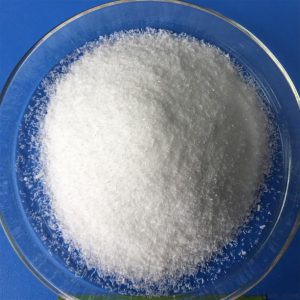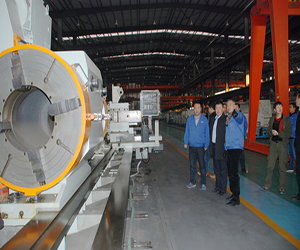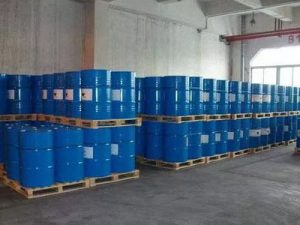Properties and Uses of Commonly Used Nonionic Surfactants
(1) Fatty alcohol polyoxyethylene ether (AEO)
Properties: AEO has different alkyl chain lengths and different lipophilicity, and different EO numbers mean different water solubility. For example, coconut oil alcohol products can be used as detergents, while C18 alcohol products can only be used as emulsifiers and leveling agents. Natural alcohols are better than synthetic alcohols in terms of detergency and emulsification, while synthetic alcohols are relatively more water-soluble (the role of the odd carbon atom). The more EO number is added, the more water-soluble the product is; AEO is oil-soluble when the EO number is below 6, and water-soluble when it exceeds 6. The more EO number is added, the lower the cloud point of the product is.

① Fatty alcohol polyoxyethylene (3) ether (AEO3, emulsifier FO or MOA-3), liquid at 25 ℃, with emulsification, leveling, penetration and other effects. In the liquid detergent can be used as an auxiliary component, or used alone as a leveling agent, textile oils and so on.
② Fatty alcohol polyoxyethylene (5) ether (AEO5, wetting agent JFC), the use of C7-C9 synthetic alcohol, EO number 5.
At room temperature is liquid, has a very good wetting and penetration effect. Mainly used in textile printing and dyeing, papermaking and other industries, as a leveling agent, penetrating agent, wetting agent, auxiliary components of industrial washing.
③ Fatty alcohol polyoxyethylene (7) ether (AEO7, emulsifier MOA-7), the use of C12-C16 coconut oil alcohol, EO number 7, light yellow liquid. Has good wetting, foaming, detergency and emulsifying power. It has high degreasing ability and hard water resistance. It can be widely used in various detergents (e.g. metal cleaner, fiber detergent) and other additives.
④ Fatty alcohol polyoxyethylene (9) ether [AEO (9), Pingpinga 9], selected C12-C16 coconut oil alcohol, EO number 9, is the most commonly used detergent main ingredient, with decontamination, emulsification, degreasing, shrinkage, wetting effect. It is widely used as main detergent.

Especially suitable for washing synthetic fibers and other non-polar substrates and other hard surfaces. Used in textile printing and dyeing industry as degreasing agent, fluffing agent, emulsifier and so on.
⑤ Fatty alcohol polyoxyethylene (10) ether (AEO-10), using C12-C18 fatty alcohol, EO number is 10, the product is soluble in water, with good wetting, emulsification, decontamination, degreasing and hard water resistance. It can be used in detergent industry, textile industry as detergent, wetting agent, textile oil component and pesticide emulsifier.
(6) Fatty alcohol polyoxyethylene (15) ether (Pingpinga 15, AEO-15, OS-15). The product has excellent emulsifying, dispersing and decontaminating properties. It is mainly used as leveling agent in textile printing and dyeing industry. It is also used as industrial detergent, such as metal processing cleaning agent. It is also used as emulsifier for cosmetics, pesticides and printing ink.
(7) Fatty alcohol polyoxyethylene (22) ether (AEO-22 leveling agent O): excellent foam, high dispersing power to prevent dyeing when the dye precipitation, can also be used as a component of washing.
(8) Oleyl alcohol polyoxyethylene (5, 10) ether (oleoyl alcohol ether -5 or -10): the product appearance is white or yellowish liquid to wax. There is a special irritating odor, the higher the EO the more viscous the product. The product has emulsifying power, dispersing power and decontamination power. It is used as detergent and emulsifier for special occasions.
(2) Alkyl phenol ethoxylates (TX-10, OP-10, OΠ-10)

Alkylphenol polyoxyethylene ethers are formed by condensing alkylphenol with ethylene oxide as the lipophilic group. One of the lipophilic groups can be phenol, cresol, naphthol, etc. The most used one is nonylphenol. The average number of ethylene oxide grafts varies. Take nonylphenol as an example, it is still insoluble in water when connected to 4 EOs, when added to 6-7 EOs, the product is completely soluble in water at room temperature, and the product condensed with 8-12 EOs has very excellent wetting, penetration and detergency, emulsification and low-foaming effect are the valuable properties of the product. 15 or more EOs, the product loses the penetration and detergency, and it can only be used as a special emulsifier and dispersant. It can only be used as special emulsifier and dispersant.
Performance: high chemical stability, resistant to strong acid and alkali, with good wetting power, penetration, decontamination and strong emulsifying power. In addition, it has low foam, anti-static, anti-hard water and good compatibility, which are also the excellent performance of its wide use.
Uses: Widely used in industrial and public facility detergents. Such as metal acid detergent, alkaline detergent, metal water-based cleaning agent,
Stove or kitchenware detergent, textile industry detergent, leveling agent and all kinds of hard surface cleaning agent.
(3) Fatty acid polyoxyethylene (10) ester (emulsifier SE-10)
Properties: fatty acid polyoxyethylene (10) ester penetration and detergency is not as strong as fatty alcohol and alkyl phenol products, mainly used as emulsifiers, dispersants, fiber oiling agents, dyeing auxiliaries. Its chemical stability is also poor, easy to hydrolyze under strong acid or alkali conditions, the performance is significantly reduced. The product is insoluble in water, can be dispersed in water, thickening, softening and wetting effect.
Uses: emulsifier for cosmetics and shoe polish, antistatic agent for chemical fiber, softening and smoothing agent, thickening agent for liquid detergent, dyeing auxiliaries, etc.
(4) Fatty amine polyoxyethylene ether (leveling agent AN)
Properties: These surfactants have both nonionic and cationic properties, and can be used at various pH, and exhibit nonionic (in alkaline or neutral solution) or cationic (in acidic solution) properties, with excellent emulsifying power, corrosion inhibition, and antifouling effects.
Uses: It is mainly used as a dyeing auxiliary in the textile industry. Also commonly used in the production of rayon, not only can enhance the strength of the fiber, but also to maintain the cleanliness of the spinneret, to prevent the deposition of dirt. In the petroleum refining industry, it can inhibit the corrosion of acid gas on metal equipment and improve the utilization rate of equipment. It can be used as an auxiliary component in industrial detergents.
(5) Alkyl alcohol amide polyoxyethylene ether
Performance: Alkanolamide itself is a typical nonionic surfactant, with excellent foaming, bubble stabilization and decontamination ability. Only the water solubility of 1:1 type is poor. After condensing EO, it improves the washing and detergency of the product, strengthens the foaming power of stabilizing foam, and at the same time has solubilizing and thickening effects. Compared with other nonionic surfactants, it has good compatibility, not only with various ionic and nonionic surfactants, but also with many inorganic additives. Calcium soap has strong dispersing power, good biodegradability, mild, non-toxic and low irritation to skin.
Uses: It is a new type of excellent washing raw material. It can be used in personal hygiene products, shampoo shampoo, hard surface cleaner, hand dishwashing detergent. In other preparations as a foaming agent, foam stabilizer, fat and etherification oil solubilizer.
(6) Block polyoxyethylene-polyoxypropylene ether (PO-EO copolymer)
For this surfactant, several varieties of polyether with application value can be listed below to describe their properties and uses.
①Propylene glycol polyoxyethylene polyoxypropylene ether (emulsion breaker PE)
Performance: Emulsion breaker PE has many models: 2010-2090. with the increase of molecular mass, the appearance changes from liquid to solid, the water value or HLB value changes from large to small, the cloud point changes from low to high, the performance is different, the use is also different, and there are many varieties from the emulsion breakers to emulsifiers, antifoam agents to detergents.
Uses: The product is mainly used as an emulsion breaker, emulsifier and defoamer. Used in crude oil desalination, dehydration, preparation of a variety of low-foaming detergents, used as a diffusion agent and so on. It is used as defoamer and decontamination in industrial detergents. Liquid products can be used as a degreasing component in the washing of heavy dirt and stains.
②Propylene glycol polyoxyethylene polyoxypropylene ether (defoamer PPE)
Properties: The product is yellowish transparent liquid with good defoaming performance and non-toxicity. Low molecular weight products have good wetting effect and can be used as low-foaming washing ingredients. High molecular weight products can be used as defoamer and coagulant.
Uses: It can be used as antifoaming agent in MSG and pharmaceutical industry, and also can be used to formulate cooling lubricant for metal processing and low-foaming detergent.
Propylene glycol polyoxyethylene polyoxypropylene block copolymer (GPE antifoam agent)
Performance: The difference with PPE is the different arrangement of EO/PO. Propylene oxide (PO) is the starting block and ethylene oxide (EO) is the end block. When the molecular weight is low and the EO content is relatively high, the product is water-soluble and can be used as a low-foaming detergent, and when the EO is low, it has the best wettability. When the molecular weight is high, it can be used as defoamer and flocculant.
Uses: Mainly used as defoamer in MSG and pharmaceutical industry. It can also be used in industrial detergents with low foam and high alkali resistance. It can also be used as corrosion inhibitor, emulsion breaker, flocculant and so on.
④Ethylenediamine polyoxyethylene polyoxypropylene block polyether
Properties: ethylenediamine as a starting material, that is, the synthesis of the product of four functional groups, PO for the starting segment, EO for the end, PO’s total molar mass of at least 500g/mol as a lipophilic group, the relative molecular mass of 550-30,000. of which EO accounted for 10%-80%.
The tetrafunctional EO/PO block copolymer is basic, and it has higher thermal and chemical stability than the bifunctional product. By changing the position and quantity of EO/PO block copolymer, products with very different properties can be obtained. It can be used as detergent with strong detergency and oil removing power, and also can be used as high efficient defoamer, emulsion breaker, thickener, etc.
Uses: It can be used with various ionic or non-ionic surfactants to make low-foaming detergent, alkali wetting agent, solubility degreasing agent, low irritation dishwashing agent, emulsion breaker or emulsifier.
⑤ Polysiloxane polyether copolymer
Properties: A, foam inhibition and defoaming effect, is a major feature of silicone-containing polyether, can be used as defoamer, foam inhibitor, which is very useful in industrial washing and industrial production. b, wetting and lubricating effect, which is not general surfactant, can be used for the need of slippery, moisturizing products. c, emulsification and emulsion breaking effect, in different occasions, choose different structure of the product can be used for compounding. d, soft and antistatic effect, which is a softener and antistatic effect. D, softening and antistatic effect, which is a detergent and textile industry production are necessary.
Uses: Used in shampoo, shower gel, hard surface detergent, textile auxiliaries and oil and other products.
(7) Alkyl alcohol amides
Alkyl alcohol amides are a large class of nonionic surfactants with a long history of use and a large number of varieties and quantities. They can be directly used as industrial detergents, or used in detergents as foaming agents, foam stabilizers, antirust agents, thickeners, solubilizers. Such as the following list of several typical surfactants in this category.
①Coconut fatty acid monoethanolamide (1:1 type)
It is solid in appearance, insoluble in water, and can become transparent liquid after matching with other surfactants. It has the ability of foam stabilization, viscosity increase, wetting, decontamination and hard water resistance, and the biodegradation rate is as high as 97.3%.
Uses: It can be used in soap powder and washing powder to remove dirt, resist hard water and stabilize foam. In industrial detergents can be used as decontamination, wetting, thickening and other ingredients.
② Coconut oil fatty acid diethanolamide (1:1 type and 1:2 type)
Properties: mainly foam stabilization and decontamination. In the liquid product formulation it can be thickened. In addition, it also has the role of rust prevention, in personal hygiene products can also play a conditioning, softening effect. 1:2-type products can be used directly as a liquid detergent, water solubility double 1:1-type good.
Uses: It can be used as foam improving agent in various detergents, and can stabilize foam and foaming. In liquid detergent, it also has thickening effect; when making emulsified products, it is used as emulsifier of oily raw materials. It is also used as an antistatic conditioning agent, and is suitable for the preparation of detergent conditioning agents for fibers. It can be used in metal detergents to prevent rust, and 1:2 type products can be directly used as detergents.
High-carbon fatty acid diethanolamide
Properties: It has good thickening property with liquid detergent; its compatibility can be improved by matching when adding other surfactants which can be solubilized.
Uses: Mainly used in liquid detergents, thickening effect, but also foam stabilization, unlike ester thickeners have defoaming effect.
(8) Alkyl polyglucoside (alkyl polyglucoside APG)
Performance: Alkyl polyglucoside is a nonionic surfactant, which is similar to glucose ester. As the structure of the alkyl chain length and the degree of glucose polymerization can be selected within a certain range, it can be obtained similar to the performance of fatty alcohol polyoxyethylene ether series products.
The main properties of alkyl polyglucosides include easy biodegradation, good mucosal compatibility, oral toxicity and metabolism. It has become a preferred raw material in the cosmetics, food and meal washing industries. Because of its great ability to reduce surface and interfacial tension, as well as its rich, fine and stable foaming power and strong detergency, it is particularly suitable for the formulation of detergents. It is very stable to acid, alkali and salt media, and has good compatibility with various surfactants, so it is more suitable for use in industrial and public facilities detergents. It also has special properties such as sterilizing and improving enzyme activity.
Uses: Mainly used in alkaline, acidic or neutral hard surface detergent, milk bottle, beer bottle cleaner, industrial detergent, personal hygiene detergent, tableware and dairy industrial detergent.
(9) Polyol esters
Performance: Polyol ester surfactants are nonionic surfactants. Due to the strong lipophilic group, hydrophilic group for the residual hydroxyl group, so most of these products are insoluble in water or poor hydrophilicity, mainly used as oil-soluble emulsifiers, skin or fiber lubricants. They are mainly used as auxiliaries in detergents.
A few famous varieties are introduced as follows:
① Ethylene Glycol Monostearate or Distearate, Polyethylene Glycol Distearate: The stearate of ethylene glycol is either made into a mono ester or into a diester, all of which are white to light yellow waxy solids. They have a pearly luster and have thickening, conditioning, antistatic and defoaming effects on aqueous systems. Used as an additive in liquid detergents. The esters made of mono- or di-acetylene glycol not only retain the original characteristics of glycol esters, but also can realize low-temperature emulsification and better overall performance. High degree of polymerization (relative molecular mass of 6000) of polyethylene glycol ester thickening stronger, improve the rationality, but also to improve the system of skin irritation.
② Propylene Glycol Mono Ridge Fatty Acid Ester, Propylene Glycol Alginate: the esters of propylene glycol do not have pearlescent effect, mainly have emulsifying effect.
Propylene glycol monostearate is white wax with mild aroma, belongs to water-in-oil emulsifier with strong lipophilicity, HLB=3 or so, and also has strong antifoaming power. Propylene Glycol Alginate is white to light yellow fibrous powder, almost odorless and tasteless, it forms viscous gelatinous solution after dissolved in water, and it can form gel in acidic solution when pH is 3~4 without precipitation. It has strong resistance to salt precipitation and does not precipitate in concentrated electrolyte solution. It can be used as thickener of acidic solution, strong lipophilic emulsion stabilizer, defoamer, etc..
Glycerol monostearate and distearate: fatty acid esters of glycerol are mainly used as oil-soluble emulsifiers, especially in the food processing industry. Because it is non-toxic and odorless, it is allowed to be used as food additive. They are used as emulsifiers in detergent products.
Sorbitol fatty acid esters: This is a group of products with a long history, wide range of uses and mature technology, and the trade name is Span. The products mainly include dehydrated sorbitol monolaurate (Span-20), dehydrated sorbitol monopalmitate (Span-40), dehydrated sorbitol monostearate (Span-60), dehydrated sorbitol monooleate (Span-80). These products are insoluble in water but soluble in organic solvents, non-toxic and odorless, with HLB value of 8.6~4.3, and can prepare water-in-oil emulsions.
They are widely used as emulsifiers, dispersants, thickeners and rust inhibitors. It is used as auxiliary in industrial detergent.
In the series of products of Spectrum, it is respectively contracted 2

